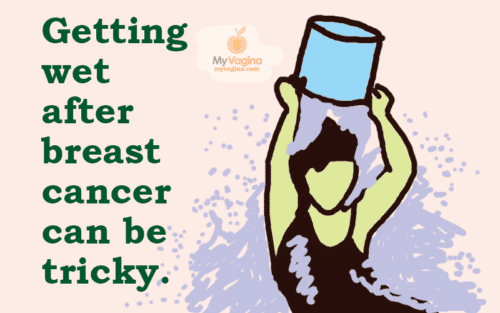Vaginal dryness, irritation and atrophy on high dose T therapy
Learn why testosterone therapy can cause vaginal dryness, irritation, and atrophy in trans men, and discover effective tips and treatments.
Tissue laxity in the labia and vagina
The saggy labia and loose vagina have one main cause: stretched or damaged collagen fibres. Repairing this can be challenging, but with advances in physiotherapy and surgical techniques, and technology, you do have options.
How to moisten a dry vagina
A quick look at the different options for moistening a dry vagina.
Atrophic vaginitis caused by menopause has a new name
Vulvovaginal atrophy caused by menopause has an updated umbrella term - genitourinary symptoms of menopause (GSM).
Treatments for lax vaginal, pelvic or urinary tissue – ‘non-surgical vaginal rejuvenation’
If you have a loose vag or stress urinary incontinence, or know someone who does, there are now noninvasive (nonsurgical) ways to treat these issues from the cells up.
Review: Estrace vaginal oestrogen cream
A quick overview of Estrace vaginal cream for atrophic vaginitis.
Review: Luvena Restorative Moisturizer – how does it work?
This product may act in a tonic fashion by providing the vagina with ingredients to deter pathogens, encourage normal vaginal flora, and moisturise vaginal mucous membranes.
Atrophic vaginitis in breast cancer survivors
Moistening the vaginas of women suffering from the side-effects of breast cancer treatment.
Oral pilocarpine can moisten a dry vagina
A study shows that oral pilocarpine can offer those on chemotherapy relief from vaginal dryness with mild side effects.
Pelvic radiation therapy
Having radiation therapy on your pelvis can cause some unwelcome problems that can linger, like a dry, thickened vaginal wall, lack of moisture, and lack of flexibility.
Atrophic vaginitis (now part of Genitourinary Symptoms of Menopause GSM)
Atrophic vaginitis is caused by low oestrogen levels, since vaginal cells rely heavily on oestrogen to stay plump and juicy. Without oestrogen, our vulvar and vaginal cells can really suffer, becoming dry, easily broken, and irritated.



